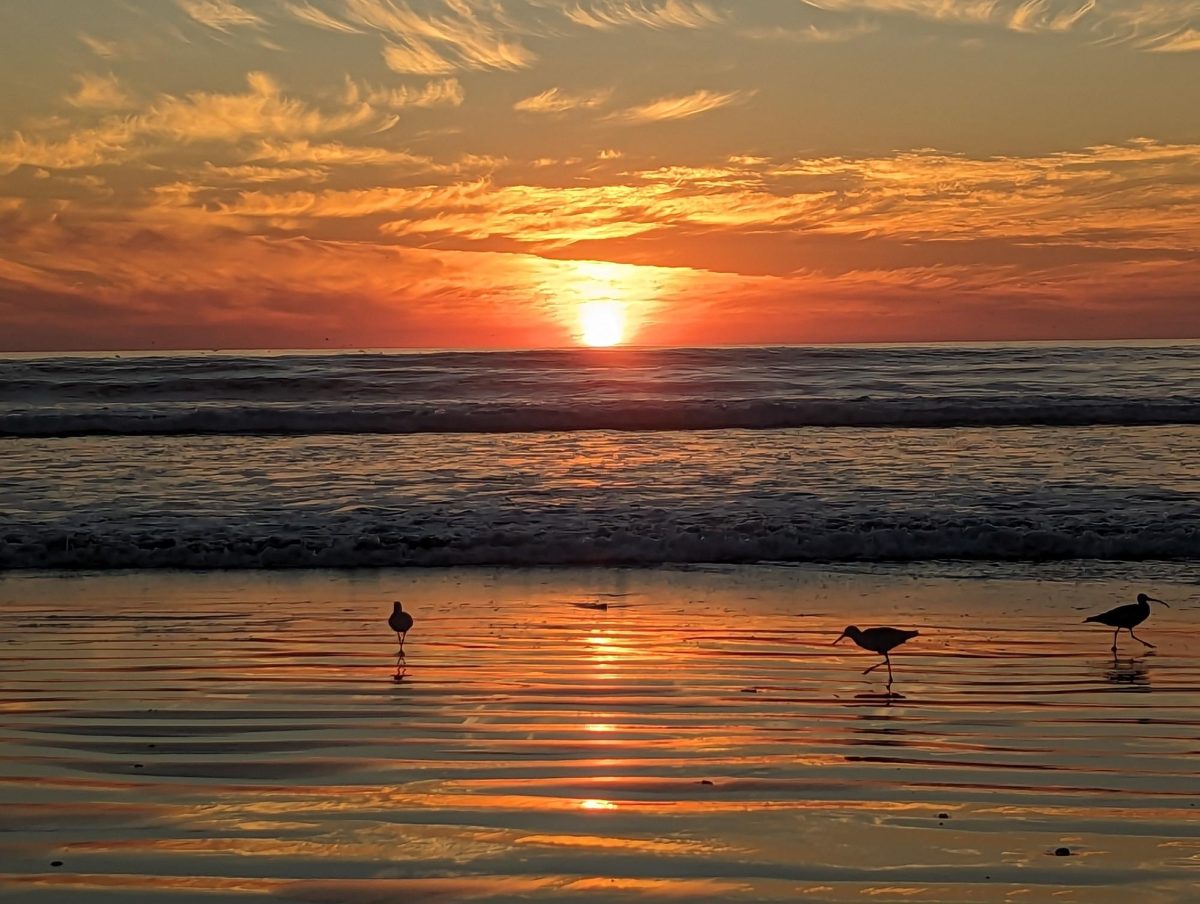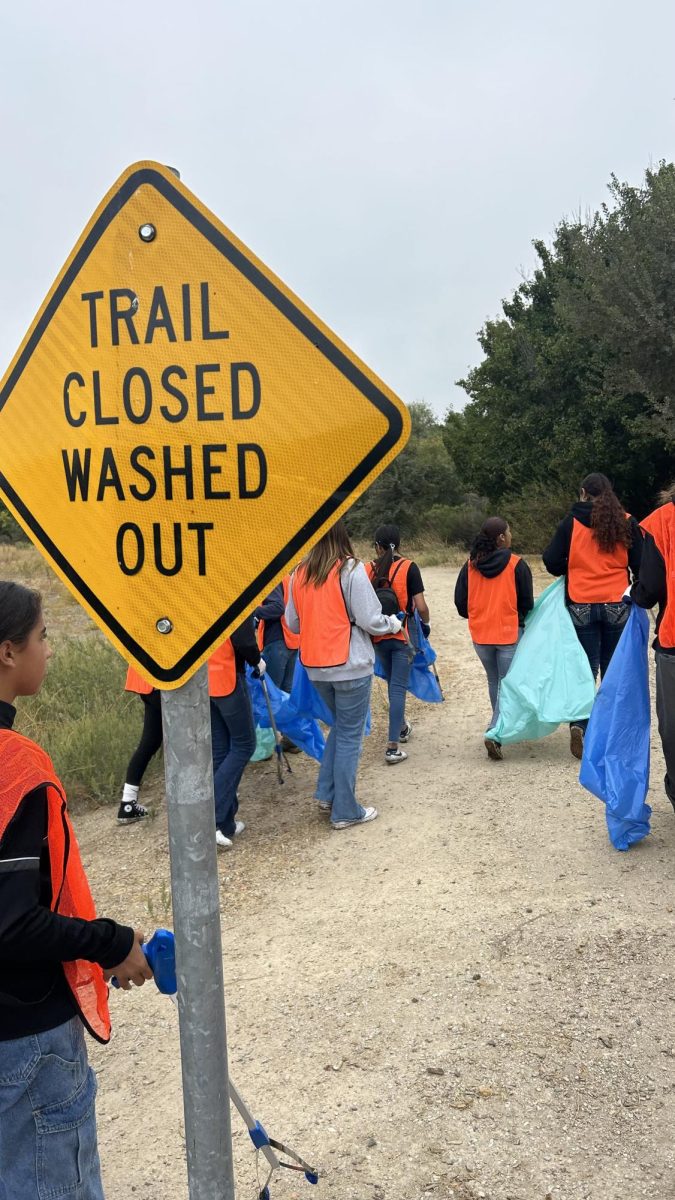The great pacific garbage patch litters the ocean
The seagull hopped on one foot down the length of the beach, with the chirps of other birds and the roar of the ocean being the only noises accompanying his stroll. He stops to peck at something green, that resembles seaweed. Little does the bird know, but the “seaweed” is actually a bottle cap from a water bottle, and the bird has ingested dozens of bottle caps in his life. He will die from starvation caused by bottle caps. Why starvation? The bottle caps fill up the birds stomach, until the bird has no way to consume food because he has no place to store it.
This scenario happens daily, and ninety percent of trash in the ocean is plastic. Most comes from the world’s largest landfill:the Great Pacific garbage patch, which is made up of 100 million tons of trash, of which plastics constitute over 80 percent. The vortex is not composed of intact plastics; the trash photodegrades into smaller pieces by being exposed to sun and water, earning the new name of “microplastic.” These tiny pieces of plastic give the water around the patch a sad, gray cloudiness amid the blue purity of the Pacific in which it floats.
Microplastics are a danger to wildlife because they are mistaken as food, and eventually poison marine life, according to National Geographic. The plastic also blocks the animal’s digestive tract, causing death by starvation for over a million birds each year, according to protectyourcenteralcoast.org.
The Great Pacific Garbage Patch accumulated from debris from commercial ships, spilled shipping containers, and land litter. Over eighty percent of the plastic trash in the ocean originates on land, according to the LA Times. It was “discovered” in the 90’s by Charles Moore, a racing boat captain. The Great Pacific garbage patch is located between the western coast of North America and Japan. The North Pacific Subtropical Convergence Zone is the epicenter of the Pacific Ocean, and is a specific area of the ocean’s circular currents called a gyre. This is a swirling vortex that sucks the microplastics into a compact area.
Science teacher Mark DiMaggio has known about the garbage patch for ten years,and still feels strongly about educating the younger generation about trash. “We need to eliminate our use of non-biodegradable materials.” DiMaggio says. He believes the garbage patch hits close to home, with the plastic trash littering our local beaches and endangering wildlife. According to seaturtle.com, over 260 species of marine wildlife have ingested unnatural amounts of plastic just in the Great Pacific garbage patch alone. The chemicals found in plastic impair reproduction, movement, and the digestive tract for wildlife. Over forty percent of Albatross chicks died before fledging because of the large amounts of plastic found in their stomach, according to the International Bird Rescue.
[blockquote author=”Emma Zelus, 12″ pull=”pullright”]
It’s how far reaching human consequences are.”
[/blockquote]
It is not only everyday plastic trash to blame for the disaster; ghost fishing is a deadly killer. Ghost fishing occurs when discarded fishing nets are left in the ocean and entrap marine wildlife, such as turtles, seals, and dolphins by accident, and eventually strangling them to death. An estimated 640,000 tons of nets are left in the ocean annually, according to World Animal Protection. Abandoned nets are detrimental to coral reefs as well. 81.5 tons of coral are destroyed by abandoned nets just in Alaska alone, according to marine-conservation.org. Coral reefs are essential for life on the planet. They are home to over 4,000 species of fish and contain the possible cures for cancer, arthritis, and heart disease, according to the National Ocean Service. The reefs also control the amount of carbon dioxide found in salt water- coral reefs are the trees of the ocean. However, because of ghost fishing and other factors, only five percent of coral reefs are deemed healthy and undisturbed, which is 12,000 miles out of 240,000 total miles.
“It’s not bad that we make plastic… It’s bad that we let them get into the ocean. It’s how far reaching human consequences are,” says senior Emma Zelus, who is president of the environment club BCASE. Zelus’ goals for BCASE this year include planting trees around campus and hosting a school concert to raise awareness for shark finning.
The Great Pacific garbage patch has worldwide effects, but not every student has a full understanding.
“No, I don’t know about the garbage patch…It can’t be very good for the ocean,” says freshman Amanda Hale.
27 birds out of 41 died from ingesting plastic in 2006 off the coast of Monterey Bay, causing starvation throughout the flock, according to the California Department of Fish and Wildlife.
When plastic litters our ocean, it has a severe consequence. However, the future of the ocean looks bright and clean, thanks to today’s society doing the good kind of trash talk.





